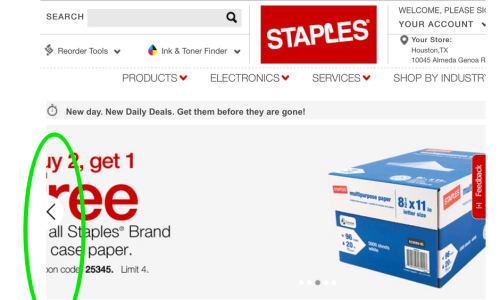Last Updated January 1, 2018
Here are two confounding numbers at the core of any mobile optimization: 53% vs. 13%. The first highlights mobile’s incredibly growing share of online shopping time as compared to desktops. The second and much smaller number is mobile’s share of online purchases.
Want more depressing numbers? Here are two from Monetate. Conversion rates for desktops are a mere 2.78%, but on mobile phones the rate drastically drops to about 0.8% – less than a third of the rate of desktops.
Mobile sales just don’t match mobile shopping … yet!
eMarketer estimates mobile conversions will reach $77 billion this year, yet the totals still don’t reflect where mobile ought to be, and where it likely will be in just two years.
What’s holding consumers back? What’s stopping them from plunking down their credit card and finalizing the transaction from their phone or tablet?
The Brutal 7
Consumers have repeatedly expressed their discontent with the following 7 critical shortcomings of mobile shopping. Addressing them with intrepid skill, innovative thinking and responsive web design (RWD) is surely the key to mobile optimization.
1. Security fears
Research from Comscore reveals that fully one third of online consumers report significant concerns over the security of their data and payment information, blocking them psychologically from easily signing the bottom line. In this era of widespread data theft, such worries are nothing to sneeze at. To combat such fears, retailers and brands must highlight their record of security. They need to underscore the measures they are taking to safeguard all business transactions and potentially include outside credentialing.
2. Can’t see product details
Here the mobile phone’s miniature size and easy portability is actually its drawback. Nearly half of customers polled indicate that they fail to make a purchase on their mobile phone because the visual detail is simply inadequate to judge the product. Compounding that issue are complaints that product information cannot be easily viewed.
Businesses need to employ responsive web design to ensure mobile optimization. RWD automatically adjusts images and text to the proportions of the small screen to ensure legibility

3. Slow load times stopping mobile optimization
Over 40% of consumers are unhappy with slow load times and say it inhibits their online shopping, reports Mobiquity. In essence speed (or its lack) kills mobile conversions. According to KissMetrics, 47% of shoppers expect a web page to load within two seconds. Over four seconds, you risk serious customer dissatisfaction and bounce.
Shockingly, Trilibis tells us that 31% of sites actually take from 8 to 48 seconds to load. In contrast, Google developers aim for a load time under one second. Check your mobile load times with Mobilizer’s device-level metrics to see if you deliver under four seconds. Images are frequently the main culprit for exaggerated page weight and therefore slow load time.
4. Difficult or slow navigation between screens
Consumers are frequently frustrated by their inability to find coupons and discounts or simply get to the next screen. RWD for mobile devices seeks to simplify all navigation and eliminate the multipage architecture of traditional websites. RWD also ensures all navigation buttons and guides are crystal clear, so users will get the link right the first time and not hop back and forth between pages.
5. Too challenging to input name, address and payment info
Econsultancy reports that 29% of shoppers fail to complete a purchase because of difficulties entering names, address etc. into the small screen. Closely related is what Google labels a top sin in mobile design: tap-targets that are inadequately spaced.
 6. Cut off images, altered fonts, unplayable content
6. Cut off images, altered fonts, unplayable content
A shockingly large share of websites perform poorly on mobile devices. Even the world’s best-known brands – like Staples, Whirlpool and Taco Bell – have no idea how well their website pages are displaying to customers (and over 60% of online viewing is now mobile-only!). Don’t allow social media to adopt you as their latest example of a “fail.”
A key part of the issue is visibility – can you easily inspect your site across all the major mobile devices to ensure your customers’ experience? (Warning: marketing puff ahead.) That of course is the beauty of Mobilizer. Our easy tool lets you easily spot-check your web pages’ performance on actual mobile devices in within ~30 seconds, right from the comfort of your desktop browser.
7. Unreadable text or indecipherable pictures without zooming or scrolling.
This is another top sin according to Google. Besides frustrating shoppers, illegible images and texts will also mark you as “mobile unfriendly” in Google’s eye and lower you in their search engine rankings.
A majority of shoppers (67%) are more likely to buy from a website compatible with their mobile devices. Isn’t it time you inspected your website for these 7 critical defects and initiated a rigorous program of mobile optimization?
- Google’s AMP: Enemy or Ally to Your Mobile Friendly Website? - January 29, 2018
- Mobile Marketing: Optimize the Mobile Customer Journey - January 29, 2018
- Mobile Load Time: Increasing Mobile Page Speed to Improve Mobile Conversion - January 22, 2018
